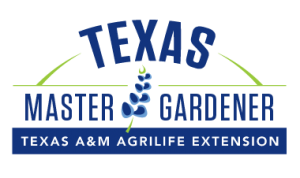By Jackie Sledge
Big Country Master Gardener
What has happened to my wonderful plants? Did I plant the wrong cultivars? Did I do something wrong? Did I neglect them? Did I “love” them too much? Where do I begin to fix the problem? I started researching what to do to diagnose my plant problems and how to fix them, and I quickly discovered that there is an endless supply of information readily available in books and online. Unfortunately, I became confused by the differing advice on what to do and when to do it.
I finally read a source that simply said that problems with plant stems, leaves, and flowers may actually just be symptoms, and the real issue is a problem with the soil. That makes perfect sense! I knew immediately that I needed to do a soil test to identify what was going on underground and what to do to make the soil healthy again.
The “go to” source for soil testing and questions is http://soiltesting.tamu.edu. There is information on how to get a good soil sample to ensure the results will be accurate. There is also an explanation of the different tests available, so you get the information you need. The soil publications and water publications on this website are excellent resources.
The Soil Test Information form provides the following information on how to collect soil and send it to be analyzed.
“Texas A&M recommends the following:
TAKING A SOIL SAMPLE FOR FERTILIZER RECOMMENDATIONS
Where to sample
• A soil sample should represent a given area of your lawn or garden that is treated or used similarly (for example, front yard, back yard, planting bed, garden, etc.).
• Sample areas separately if you observe distinct differences in slope, soil texture (for example sandy areas verses clayey) or water drainage.
• The laboratory does not provide analyses for heavy metals, microbial communities, pesticides, or other non-traditional plant-nutrient management uses.
Collecting a soil sample
• Using a trowel or similar tool, scrape away any non-decomposed plant tissue and materials.
• Next, cut a core or divot 6 inches deep into the soil and place soil in a clean plastic container. Repeat this step 8 to 10 times in the lawn or garden which is being considered for testing.
• Mix all collected soil thoroughly, removing any roots or other visible plant materials and fill a quart sized re-sealable freezer plastic bag ½-¾ full. Air-dry soil if sample feels wet to the touch.
• Label the bag with a permanent marker, clearly identifying each bag with a simple sample ID matching those used on the front side of this.”
Here are some additional tips to ensure that you provide a good soil sample that will give you accurate results and recommendations from the testing lab:
- You may want to request more than one soil sample. If you want to know what to do with your lawn, dig up soil to a depth of 6 inches from several different places in the yard. Mix the soil together in a clean bucket and then fill the sample bag. If you want to sample soil in a garden area or flower bed, use the same process, but don’t dig deeper than the roots of your vegetables or flowers. Don’t mix lawn, garden, and flower bed soil together because the soil has been used for different purposes and has been treated differently in each area.
- Always use clean tools and buckets to get samples and mix them. A stick, piece of mulch, or even a small stone can skew the test results.
- Don’t take soil samples until at least 30 days after you have added fertilizer or any amendments.
- Don’t take samples from a place that was previously a compost area or a low place where water puddles after rain or running the irrigation system.
Soil testing should be done at least every 3 years, so you know what your landscape needs. Soil sample bags and information sheets are available at the Taylor County Extension Office, and now is the time to get your soil tested so amendments can be made before spring planting. I thought I knew what my grass and flower beds needed, but when I received the test results, I was surprised to find out that what they really needed was not what I was doing.
My last recommendations are the following: Do not guess about landscape needs. Get soil tests and follow the recommendations based on test results. Purchase plants, shrubs, trees, and turfgrass what will survive in our area. Be sure to plant correctly. Water deeply and less often. Using these tips will provide you with the tools you need to have a successful landscape.
BCMGA offers several education programs each month. There is a program at 6:00 p.m. on the 1st Tuesday of the month at the South Library Branch in the Mall of Abilene, and the same program is offered again at 10:00 a.m. on the 2nd Friday of the month at the Downtown Library. There is a Saturday Seminar on the last Saturday of the month at 9:00 a.m. at the Taylor County Extension Office Conference Room. Watch the BCMGA website and Facebook page for the topics and dates of these monthly programs.
If you have any questions, call the Taylor County Extension Office at 325-672-6048 or email us at mgardeners@yahoo.com. We hope you visit bcmgtx.org for information on all Big Country Master Gardener events, like us on BCMGA Facebook, and check out training presentations on BCMGA YouTube. We are here to help you.



